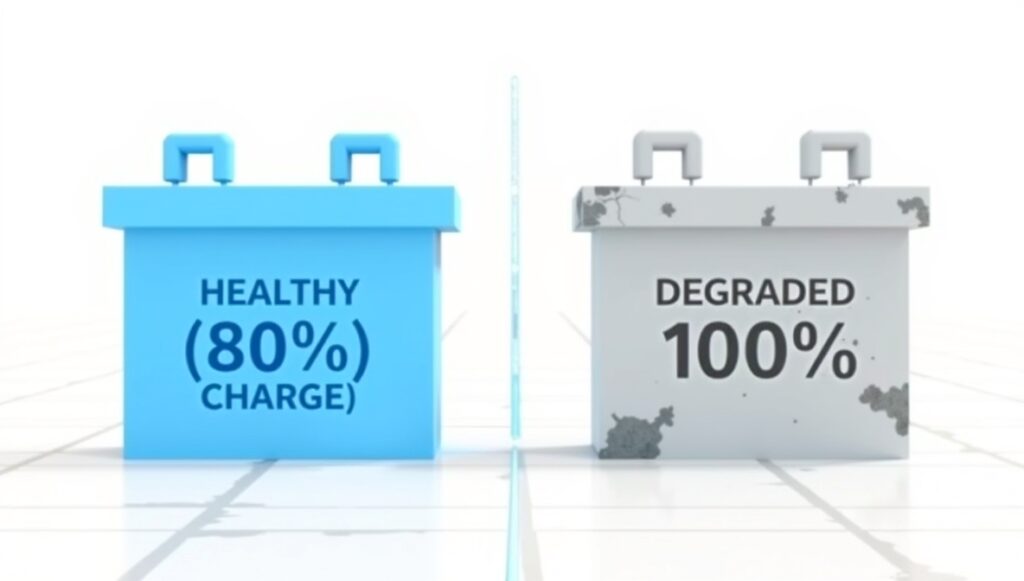90% of EV drivers ignore these unwritten rules—and it’s costing them time and sanity at charging stations. Here’s what the pros know, and get straight to our EV charging etiquette list

1. Never Unplug Another EV (Even at 100%)
Why it matters:
- Most EVs notify owners when charging completes (like Tesla app).
- Exception: If the station has clear time-limit signage (e.g., *”30-min max after full”*).
Pro tip: Leave a polite note if you must unplug someone (“Needed a quick charge—left you at 85%!”).
Related: How to Extend Your EV Battery’s Lifespan
2. The 80% “Gentleman’s Agreement” at Fast Chargers
Why it matters:
- Charging slows dramatically after 80%, wasting others’ time.
- Exception: Road trips where you need 100%.
What to do: Set a timer to move your car promptly.
Related: Why EV Batteries Must Go Circular
3. How to Queue Properly (The “EV Line”)
Why it matters: Chaotic queues frustrate everyone.
The fix:
- Park in line behind the charger (not in adjacent spots).
- Use PlugShare to check real-time wait times.
4. Don’t ICE Charging Spots (Yes, Even ‘Just for 5 Minutes’)
Why it matters: Blocking chargers with gas cars is the ultimate sin.
What to do:
- Report offenders via ChargePoint’s app.
- Carry “EV Charging Only” flyers to leave on windshields.
5. Clean Up Your Mess (Cables + Trash)
Why it matters: Tangled cables damage connectors.
Pro move:
- Loop cables neatly on the charger stand.
- Wipe down the handle if it’s muddy/rainy.
6. Avoid Overnight “Hogging” at Hotels
Why it matters: Others might arrive with 5% battery at midnight.
The fix:
- Use hotel chargers only until you hit 80%.
- Unplug before bed if the lot is full.
Related: 2025 EV Charging Secrets
7. Educate Newbies Kindly (No Gatekeeping!)
Why it matters: EV adoption grows when we help, not shame.
How to help:
- Share quick tips (“Hey, the app shows real-time charger status!”).
- Link them to this guide instead of lecturing.
Final Thought
“Great EV charging etiquette means less stress for everyone—including you. Share these rules with a fellow EV driver (we’re all learning!).”






